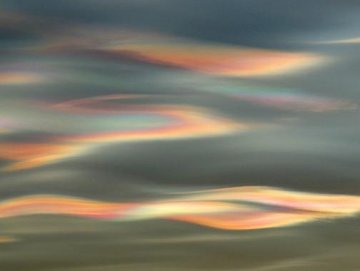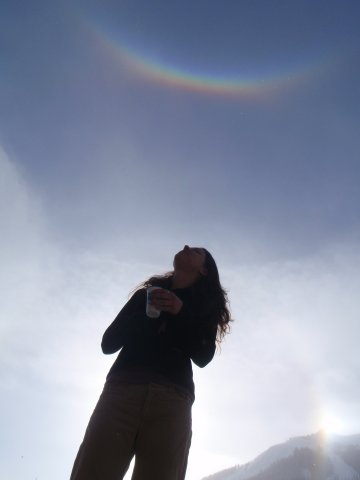| GIANT BREACH IN EARTH'S MAGNETIC FIELD: NASA's five THEMIS spacecraft have discovered a breach in Earth's magnetic field ten times larger than anything previously thought to exist. The size of the opening and the strange way it forms could overturn long-held ideas of space physics: full story. MOTHER-OF-PEARL: This morning in Norway, a bank of nacreous clouds rolled over the city of Trondheim. "They were very colorful (almost like auroras)," says onlooker Ivar Marthinusen, who sends this photo: 
Nacreous clouds are located in the stratosphere some 9 to 16 miles high. Their iridescent"mother of pearl" colors come from sunlight striking tiny ice crystals inside the clouds. Very low temperatures near -85o C are required to form the crystals, which is why nacreous clouds are seen mainly during winter over places like Alaska, Iceland and Scandinavia. These clouds are supposed to be rare, yet earlier this year northern sky watchers witnessed a veritable "nacreous storm." For more than a week in January 2008, hardly a night went by without someone spotting vivid mother-of-pearl colors in the sky. No one knows what caused the abundance or if it could happen again. One thing is sure: northern sky watchers should be alert for more. The best time to look is during the twilight hours before dawn or after sunset. SMILE IN THE SKY: Monday, Dec. 15th, was a cold day in Big Sky, Montana. At sunrise the thermometer said -29 F and the air was filled with crystals of ice. It was the perfect moment for a circumzenithal arc: 
"I've worked here at Big Sky ski resort for five winters and this is the first time I've seen one," says photographer Patrick Daigle. "It was a beauty! My co-worker Vicky made the photo possible by blocking the sun behind her." The circumzenithal arc, a.k.a. "smile in the sky", is widely held to be the most beautiful of all ice halos. It appears almost straight overhead when the sun is hanging low and shining through plate-shaped ice crystals--the same crystals that make sundogs. Indeed, Daigle witnessed a brilliant sundog below the arc. Vicky saw it, too. more images: from Mohammad Soltanolkottabi of Esfahan, Iran; from Chris Haws of Faribault, Minnesota; from Theresa Kavouras of Lakeville, Minnesota; from Tom Zerucha of Owatonna, Minnesota; from Lars Michael of Minneapolis, Minnesota;
Dec. 2008 Aurora Gallery
[Previous Decembers: 2007, 2006, 2005, 2001, 2000] | 
